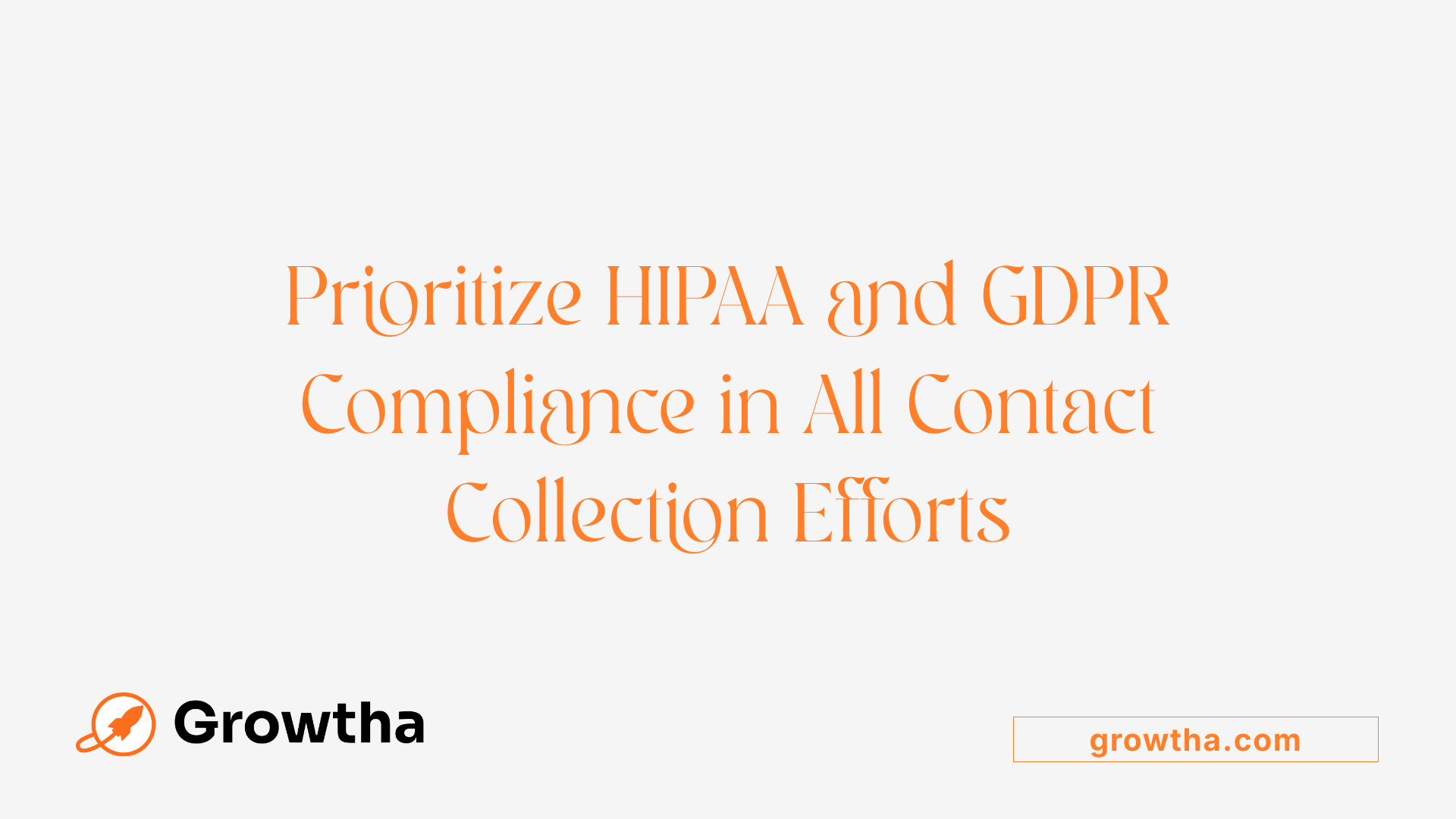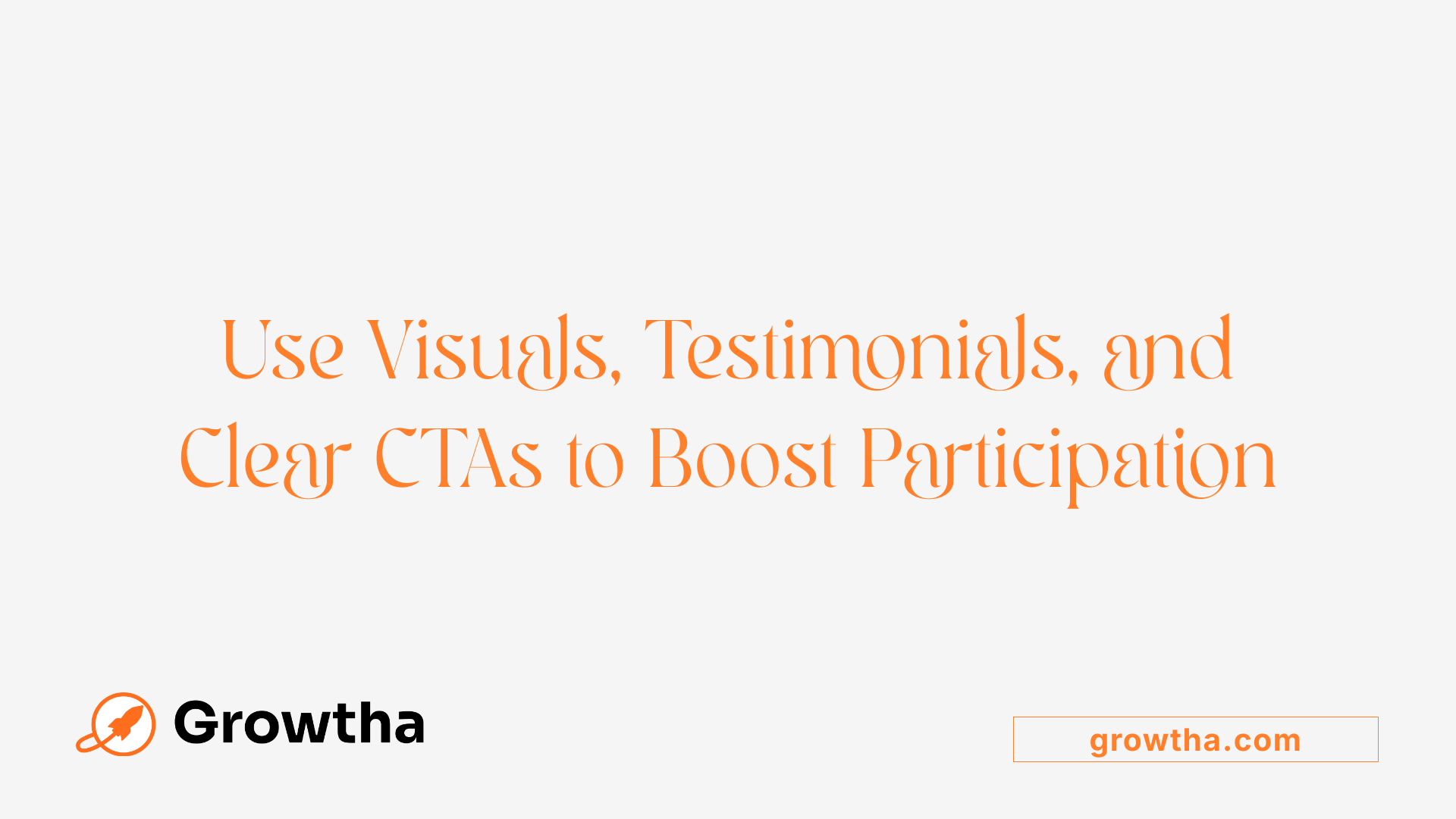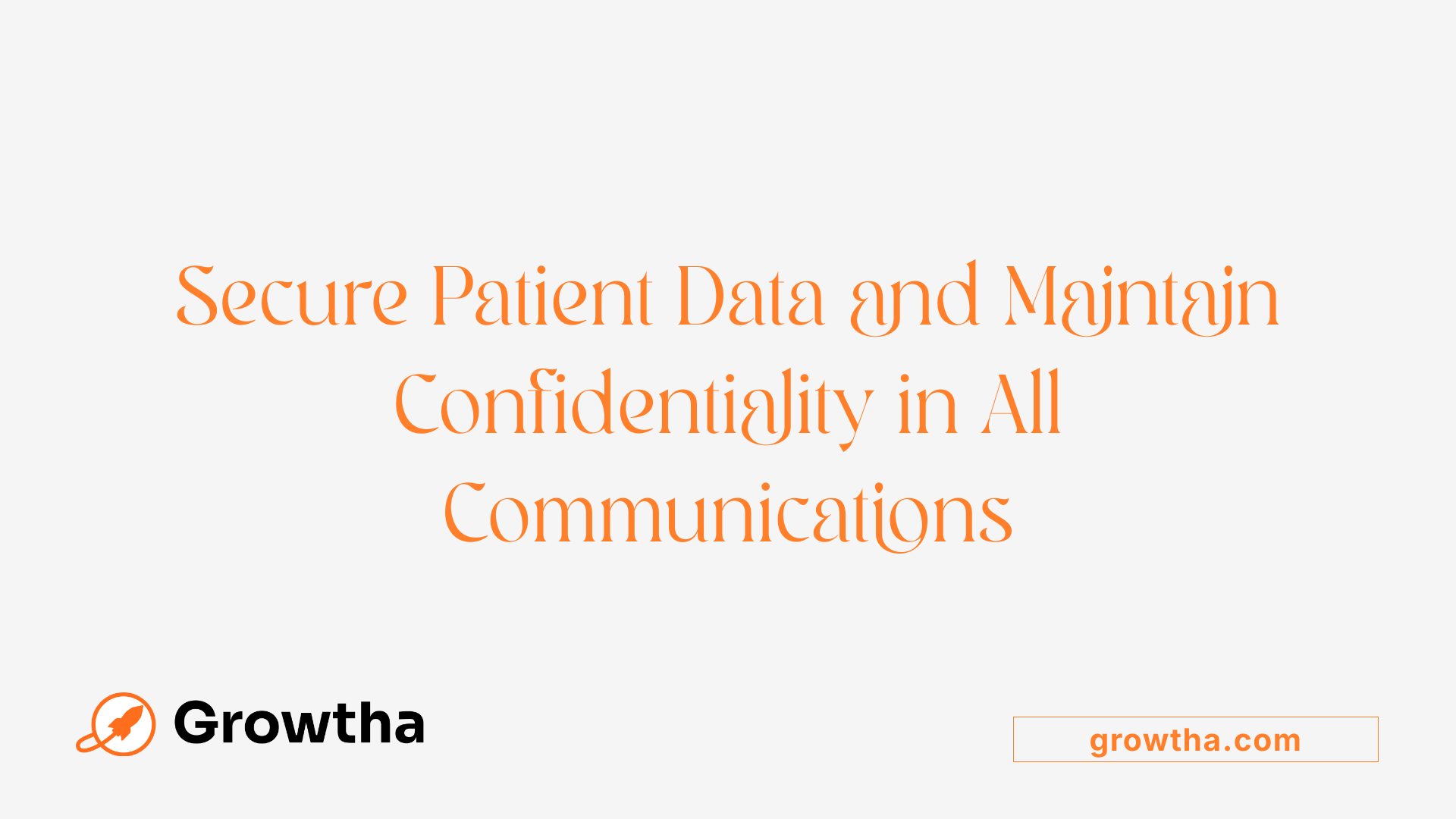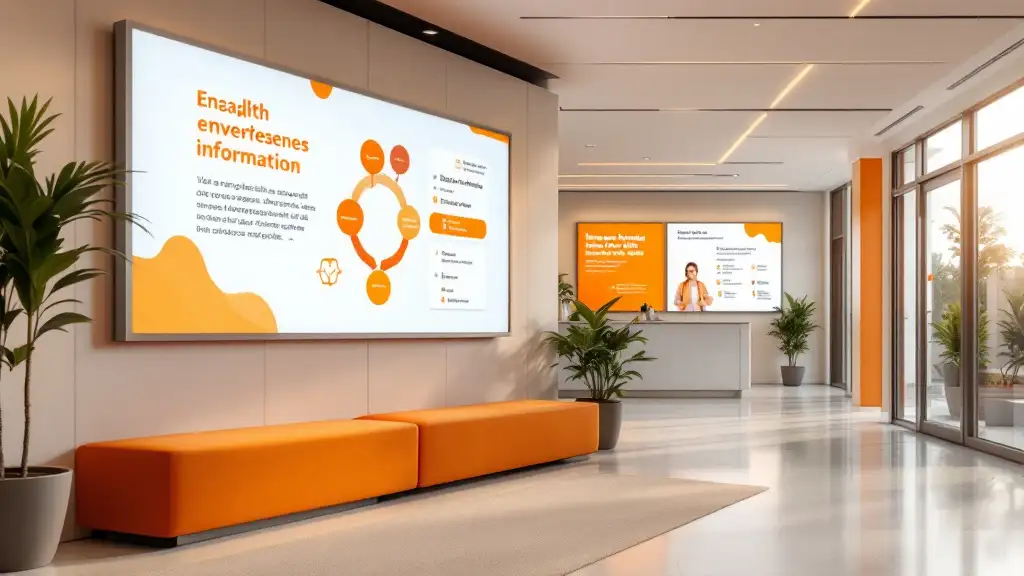Using Email Marketing to Promote Health Screenings
Harnessing the Power of Email to Boost Preventive Screenings


Using Email Marketing to Promote Health Screenings
Introduction to Email Marketing in Healthcare
Email marketing has become a cornerstone in healthcare communication, offering a cost-effective, personalized, and highly targeted method to engage patients and promote essential health screenings. As over 4.37 billion people worldwide use email daily, healthcare providers have a unique opportunity to harness this channel to foster trust, improve health outcomes, and grow their practices. Using tailored content such as appointment reminders, health tips, and preventive care alerts, healthcare organizations can effectively motivate patients to participate in screenings during ideal timeframes, aligning their outreach with health observances and screening guidelines.
Developing a Robust Contact List and Ensuring Compliance

Building a strong, HIPAA-compliant contact list
Creating an effective email marketing strategy begins with establishing a reliable and secure contact list comprised of current and prospective patients. This process involves collecting email addresses through legitimate means, such as in-office registration, online portals, or event registrations, ensuring that all data collection complies with privacy laws like HIPAA and GDPR. Healthcare organizations should focus on building a segmented list based on demographics, medical history, and engagement levels to enable targeted messaging.
Segmented lists allow for personalized communication, which is essential for increasing engagement and trust. Regularly updating and cleaning the contact list helps maintain data accuracy, prevent bounces, and improve deliverability rates. Employing secure, HIPAA-compliant email service providers—such as those offering end-to-end encryption and secure user authentication—is vital to protect sensitive information.
Obtaining patient consent through opt-in systems
Prior to sending marketing emails, healthcare providers must secure explicit patient consent through opt-in systems. This involves informing patients about the purpose of email communications, the type of content they will receive, and their rights to unsubscribe or modify preferences. Clear, simple opt-in procedures—such as checkboxes during appointment scheduling or online registration—help ensure compliance and foster trust.
Using transparent consent language explaining how their data will be used and stored reassures patients and aligns with legal standards. Optional subscription management options enable patients to customize their preferences, leading to more relevant and less intrusive messaging.
Securing data and maintaining confidentiality
Protection of patient data is paramount in healthcare email marketing. Data security measures include encrypting email content, implementing strict access controls, and maintaining audit trails to monitor access and usage. All communication channels must align with HIPAA regulations, avoiding the transmission of Protected Health Information (PHI) unless encrypted and authorized.
Healthcare organizations should regularly review their security protocols, conduct staff training on privacy practices, and perform compliance audits. Additionally, integrating secure portals for sensitive interactions, and ensuring platforms have Business Associate Agreements (BAAs) in place, further safeguards confidential information.
Using email marketing to promote health screenings
Effective strategies for leveraging email to promote health screenings involve targeted messaging based on patient data. Segmentation by age, gender, or health conditions ensures relevance. Personalized emails that highlight the importance of early detection and the benefits of screening can motivate patients to schedule appointments.
Clear calls to action, such as clickable links to booking pages or educational resources, streamline the process. Timing emails to coincide with awareness campaigns or seasonal health needs increases relevance. Providing educational content about the screenings' role in disease prevention enhances trust and perceived value.
All campaigns must comply with HIPAA regulations. This includes obtaining explicit consent, ensuring secure communication, and avoiding sharing sensitive health information in unencrypted emails. Monitoring engagement metrics like open and click-through rates helps refine messaging strategies for future campaigns.
Building and maintaining engagement and relationships
Consistent, relevant, and respectful communication through email nurtures long-term patient relationships. Personalization involves addressing patients by name and tailoring content to their interests and health status, which increases open and response rates.
Healthcare providers should use automation tools to send appointment reminders, health tips, and follow-ups, reducing administrative burdens while enhancing patient care. Regularly seeking feedback through surveys and interactions helps improve campaign effectiveness.
Fostering trust through transparency, high-quality educational content, and demonstrating regard for patient privacy solidifies commitment, loyalty, and ongoing engagement.
Content and messaging strategies to motivate participation
Successful emails employ concise, compelling messaging emphasizing the health benefits of screenings. Visual elements like infographics or patient testimonials make messages more engaging.
personalization ensures relevance—messages tailored to specific age groups, genders, or risk factors yield better responses.
Including easy-to-follow instructions for scheduling, clear deadlines, or incentives such as wellness discounts motivate action.
Optimizing for mobile devices, A/B testing subject lines and CTAs, and ensuring compliance with privacy regulations create effective campaigns that foster higher participation.
Leveraging automation and tools to enhance promotion
Email marketing automation enables healthcare providers to deliver timely, personalized messages without manual effort. Trigger-based sequences—such as follow-up emails after initial contact or reminders before appointments—keep patients engaged.
CRM integrations facilitate tailored messaging based on patient history and interactions, supporting compliance and personalization.
Using automation also helps track response patterns, adjust messaging strategies, and manage large patient populations efficiently.
Tools like Mailchimp, iContact, and specialized healthcare platforms provide features such as HIPAA compliance, secure data handling, analytics, and automated workflows.
Role in practice growth and promoting preventive services
Email marketing drives practice growth by maintaining patient relationships and attracting new patients through targeted campaigns. Regular newsletters, health tips, and promotional offers promote preventive services—like wellness exams and screenings—encouraging proactive health management.
Automated reminders increase appointment adherence, while personalized educational content builds trust.
By segmenting audiences and analyzing engagement data, practices can refine their outreach for maximum impact, ultimately expanding their patient base and revenue.
Fostering ongoing engagement and loyalty
Long-term engagement results from a strategic approach combining personalization, valuable content, and respect for patient preferences. Sending relevant updates, health prompts, and birthday or anniversary wishes enhances emotional connection.
Automated sequences for follow-up care, satisfaction surveys, and re-engagement campaigns maintain ongoing dialogue. Active feedback collection shows commitment to patient needs and helps tailor future messaging.
Building trust and demonstrating consistent care through well-crafted email campaigns nurtures lasting relationships, ensuring patient loyalty and advocacy.
Examples of successful campaigns
A notable example includes a practice sending personalized reminders for colorectal cancer screenings, resulting in increased appointment bookings. Including patient success stories and emphasizing early detection benefits resonates well.
Another success involves a health system providing educational webinars via email, significantly boosting attendance and engagement.
Using compelling subject lines like 'Your Lab Results Are Ready' or '3 Simple Ways to Manage Diabetes' captures attention and drives action.
Legal and regulatory considerations for HIPAA compliance
Healthcare organizations must adhere strictly to HIPAA regulations when designing email marketing campaigns. This involves obtaining clear patient consent, preferably through opt-in systems, before sending marketing content.
All electronic communications should be secure—using encryption and secure platforms—and avoid sharing PHI unless authorized and protected.
Emails should include options for patients to unsubscribe or modify preferences easily, respecting their right to control contact.
Regular audits, staff training on privacy practices, and employing HIPAA-compliant software platforms (with BAAs) are necessary to maintain legal compliance.
In summary, developing a strong, secure contact list, gaining explicit consent, and safeguarding patient information are foundational to effective and compliant healthcare email marketing. When executed appropriately, these strategies facilitate meaningful engagement, promote preventive health, and support organizational growth.
Effective Content Types for Promoting Screenings

What types of content and messaging strategies are most effective in healthcare emails for motivating patients to participate in health screenings?
Encouraging patients to participate in health screenings requires carefully crafted email content that is both informative and motivating. The most effective healthcare emails focus on clear and concise messaging that underscores the personal health benefits of early detection. Including educational resources—such as articles, infographics, or videos explaining the importance of screenings—helps patients understand their value.
Personalization and segmentation are critical components. By tailoring messages based on patient demographics, medical history, or previous engagement levels, healthcare providers can make communications more relevant, thus increasing the likelihood of action. For example, a patient with a family history of colorectal cancer might receive tailored reminders emphasizing early detection.
In addition, incorporating straightforward instructions for scheduling, such as links to online booking portals or contact information, simplifies the process. Visual elements like buttons, icons, and images can reduce cognitive barriers and make the call-to-action stand out.
Optimizing emails for mobile devices ensures that messages are accessible on all screen sizes, which is vital considering over half of emails are opened on smartphones. Conducting A/B testing on subject lines, visuals, and calls-to-action helps refine strategies for maximum engagement.
Furthermore, adhering to healthcare regulations like HIPAA and CAN-SPAM builds trust, reassuring patients that their information is secured and that the communication is legitimate.
By combining these content and messaging strategies within targeted campaigns, healthcare providers can significantly boost patient motivation and participation in preventive screenings, ultimately improving health outcomes.
Integration of Content Strategy with Campaign Goals

How can healthcare organizations align their messaging with patient health goals?
Aligning messaging with patient health goals is vital for effective healthcare email campaigns. This involves understanding individual patient needs, medical history, and health challenges. Personalized messages that reflect these elements help demonstrate care and relevance.
Healthcare providers should craft communications that motivate behavior change, such as encouraging regular screenings or healthy lifestyle modifications. For example, follow-up emails after wellness exams can reinforce health goals, while reminders about upcoming screenings can serve as practical nudges.
Segmenting lists based on demographics and medical conditions allows tailored messaging that directly speaks to the patient's situation, boosting engagement and trust. Clear, compassionate language further humanizes these messages, making patients feel valued and understood.
How can health education support screening initiatives?
Health education content is a powerful tool to bolster screening initiatives. By providing accessible, clear, and factual information, providers help demystify medical procedures and reduce fears.
Offering downloadable resources like guides, videos, or webinars empowers patients to learn at their own pace. Patient stories or testimonials can make the message relatable, showing real-life benefits of early detection.
Addressing common misconceptions and fears within educational content builds trust and encourages proactive health behaviors. When these materials are aligned with awareness campaigns or observances, they reinforce the message’s importance, further motivating patients to participate in screenings.
How should campaigns be designed around specific health observances?
Timing campaigns to coincide with health observances maximizes impact and relevance. Healthcare practices should plan content around key dates such as Breast Cancer Awareness Month, Movember, or World Kidney Day.
During these periods, emails can highlight specific screenings, share success stories, and include themed visuals and calls to action. For example, during Breast Cancer Awareness Month, focus on mammogram importance and patient testimonials.
Scheduling emails to peak during observance periods creates a sense of community and urgency. It showcases the healthcare provider’s commitment to proactive, community-centered care, inspiring greater participation and fostering trust.
What innovative formats can make screening promotion emails more engaging?
To increase engagement, healthcare campaigns are utilizing innovative content formats. Interactive infographics are visually appealing and instructive, guiding patients through screening processes or statistics.
Short videos featuring healthcare professionals explaining procedures or sharing patient success stories make the content more relatable and digestible. Quizzes and assessments can assess patient awareness and gently motivate action.
Gamified elements, such as earning badges for completing health education modules or scheduling screenings, add an enjoyable aspect. Personalizing content based on user behavior—like dynamic content that updates when a patient interacts—further enhances relevance.
Utilizing clickable images, embedded polls, or interactive dashboards transforms the email from a simple message into an engaging experience. These formats increase recall and motivate patients to follow through with recommended screenings, ultimately supporting better health outcomes.
Regulatory and Privacy-Safe Communication Practices

What are the legal and regulatory considerations, including HIPAA compliance, for healthcare email marketing related to health screenings?
Healthcare organizations must navigate strict legal frameworks when using email marketing for health screenings. The primary regulation is HIPAA (Health Insurance Portability and Accountability Act), which mandates protecting patient privacy and securing sensitive health information.
When promoting health screenings via email, it is crucial to first obtain explicit patient consent. This involves securing written authorization—often through an opt-in system—that clearly states what information will be shared and how it will be used. Ensuring patient awareness and voluntary participation helps maintain legal compliance and respects individual privacy rights.
Using secure, HIPAA-compliant email platforms is essential. These platforms support encryption, access controls, and audit logs, which are critical to safeguarding Protected Health Information (PHI). Partnering with vendors that offer Business Associate Agreements (BAAs) ensures that the service providers themselves adhere to HIPAA standards, providing an additional layer of security.
Transmission of emails should always occur over secure connections (e.g., HTTPS, TLS encryption). It is best practice to avoid including PHI in email subject lines, preview panes, or attachments unless the platform guarantees end-to-end encryption.
Patients should be given clear options to opt-in or opt-out at any time. Providing simple, straightforward unsubscribe or opt-out links demonstrates respect for patient preferences and reduces the risk of regulatory violations.
Furthermore, it is vital to communicate transparently with patients about the risks associated with email communication, including the potential for security breaches. Only marketing messages that conform with healthcare privacy and security rules should be sent. This includes avoiding disclosures of any unauthorized PHI and making sure marketing content is relevant, respectful, and compliant.
Regular staff training on HIPAA regulations, ongoing monitoring of email practices, and audits of security protocols are essential steps. These measures help healthcare providers identify vulnerabilities, ensure continuous compliance, and build trust with their patients.
In summary, leveraging email marketing for health screenings requires a comprehensive approach that combines explicit patient consent, the use of secure communication platforms, transparent opt-in/out procedures, and ongoing compliance monitoring. By adhering to these practices, healthcare organizations can effectively promote preventive screenings while safeguarding patient privacy.
Conclusion: Optimizing Outreach for Better Health Outcomes
Effective use of email marketing in healthcare is a powerful strategy to promote health screenings and preventive services. By combining personalized, relevant content, strategic segmentation, automation, and adherence to privacy regulations like HIPAA, healthcare providers can increase patient participation, foster long-term relationships, and support community health. Continual analysis, testing, and refinement of campaigns ensure that messaging remains impactful and aligned with evolving patient needs and regulatory standards. As digital communication continues to grow in importance, healthcare organizations that invest in targeted, compliant email strategies will be better positioned to advance preventive care, improve health outcomes, and grow their practice in an increasingly competitive landscape.
References
- Healthcare Email Marketing: Tips, Examples & Free Templates
- How to Use Email Marketing to Grow Your Healthcare Practice
- HIPAA compliant email marketing for preventative healthcare ...
- Healthcare Email Marketing: Strategies and Examples - Omnisend
- Email Marketing Tips for Healthcare Providers - ReferralMD
- Email Marketing for Doctors: Boost Patient Engagement and Grow ...
- Healthcare Email Marketing Strategies to Boost Patient Engagement ...
- Top Healthcare Email Marketing Examples for Effective Engagement
- 5 Types of Email Marketing for Healthcare Professionals - Weave
- Healthcare Email Marketing: Strategies That Work - GlockApps







